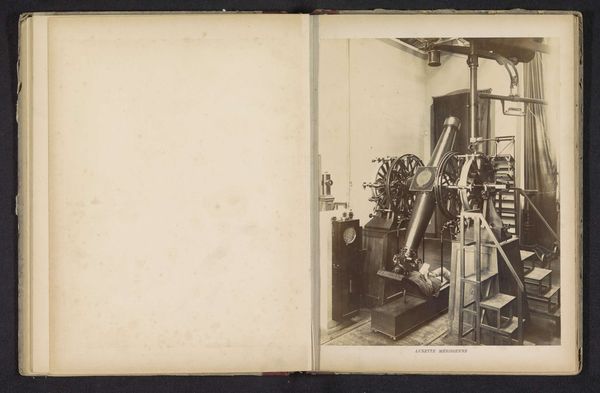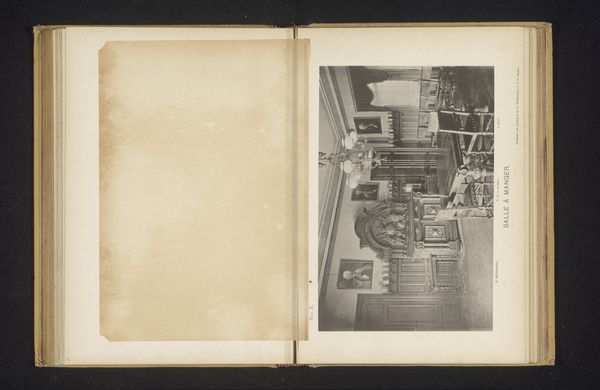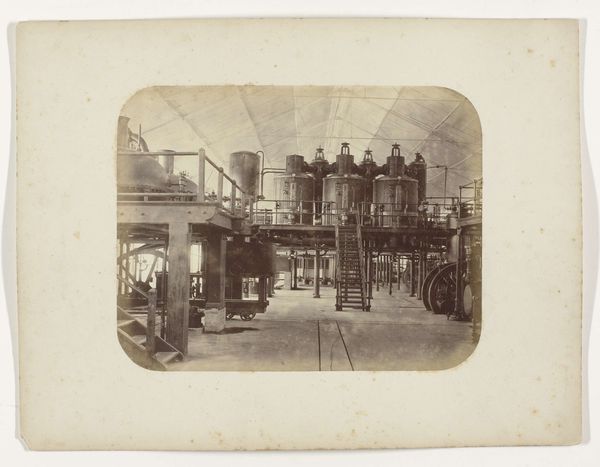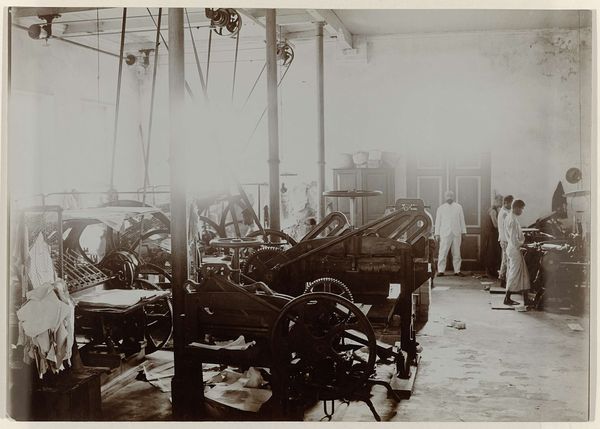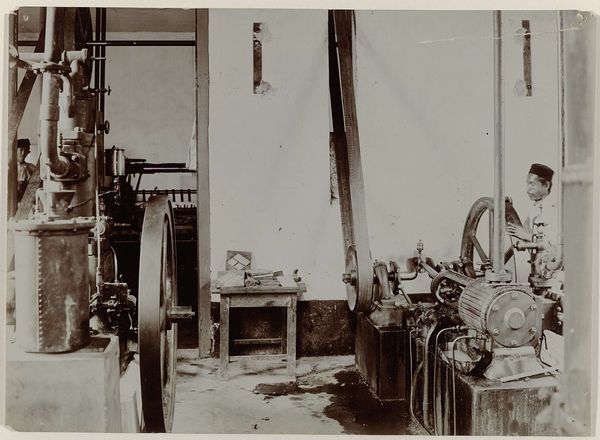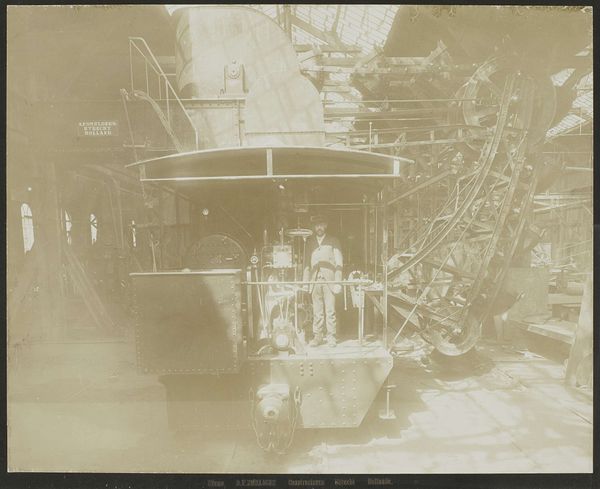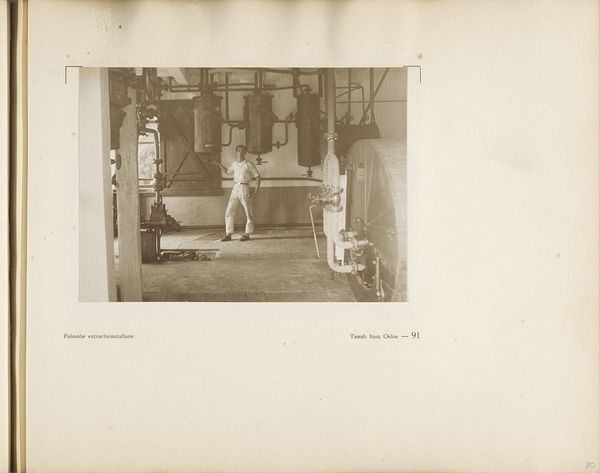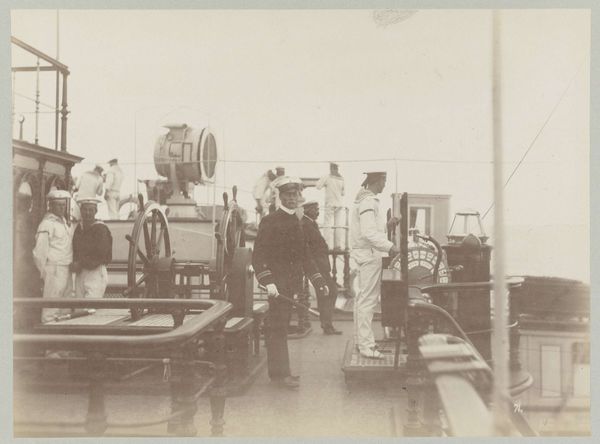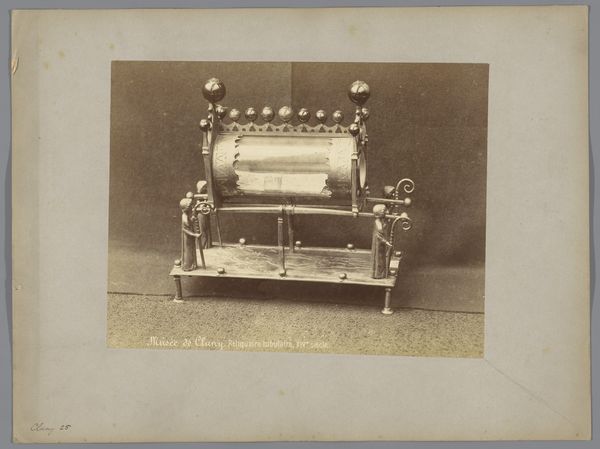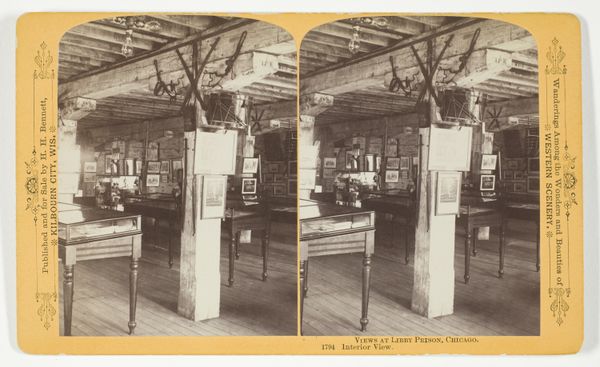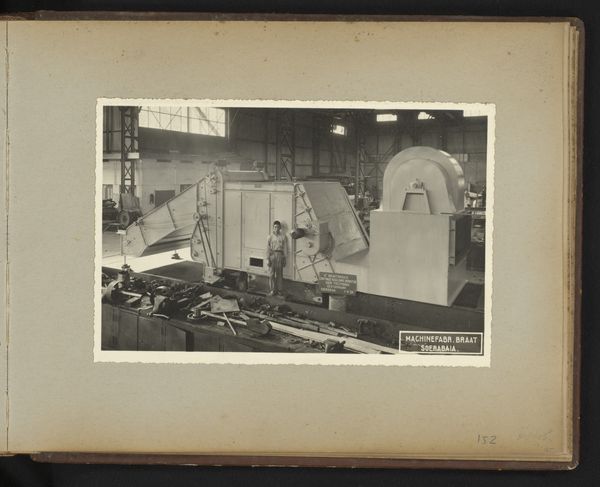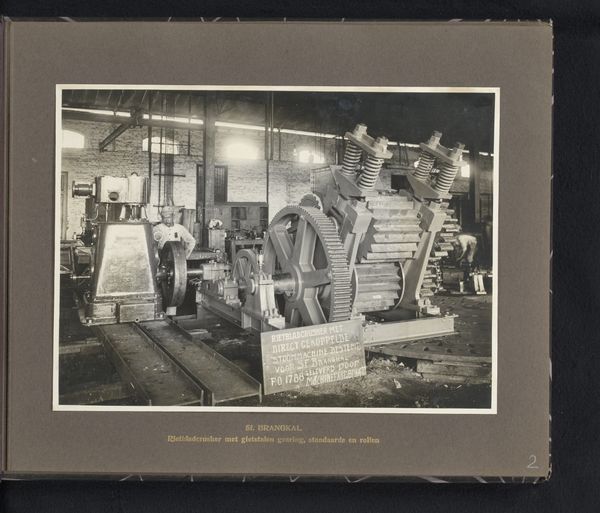
print, photography, gelatin-silver-print
# print
#
photography
#
gelatin-silver-print
#
genre-painting
#
modernism
#
realism
Dimensions: height 75 mm, width 80 mm, height 88 mm, width 178 mm
Copyright: Rijks Museum: Open Domain
Curator: This gelatin silver print, titled "Atelier Soengeiliat", attributed to Robert Julius Boers, captures a scene dated sometime between 1900 and 1922. What strikes you immediately about this work? Editor: The sepia tone gives it a strong sense of history, obviously, but what resonates most is the visual language of industry: a space dominated by imposing machinery and figures rendered almost secondary to their tools. Curator: Indeed, the composition leads our eyes through a carefully structured array of geometric forms. The rhythmic repetition of the machines and the exposed architecture highlight the aesthetic of function that characterizes early Modernism. Note also the subtle play of light and shadow that defines the materiality of the gelatin silver process. Editor: But this is also about the narrative of labor. The workers appear somewhat anonymous, their individual stories subsumed by the relentless process of production. It prompts questions about the socio-economic conditions in that atelier—who owned it, and who benefited most from the work being done there? Curator: Certainly, you point to a pertinent discourse. But consider also the photographer's deliberate choice of perspective—presenting the machinery not as mere tools of labor, but as sculpted forms within an orchestrated composition. Observe, too, how the framing of the figures themselves integrates their bodies into the industrial aesthetic. Editor: And yet, shouldn't we also reflect on how this idealized depiction of industrial labor potentially obscures the realities of exploitation that may have been present? I see a narrative, consciously or unconsciously, that celebrates industry, perhaps at the expense of human dignity. Curator: It is within this tension that the photograph finds its strength, sparking a conversation between form and historical reality. Editor: Exactly, allowing us to consider not only what we see, but also what the image elides and invites us to question about its broader implications. Curator: I appreciate your contextual lens. Editor: Thank you. The pleasure was mine.
Comments
No comments
Be the first to comment and join the conversation on the ultimate creative platform.
